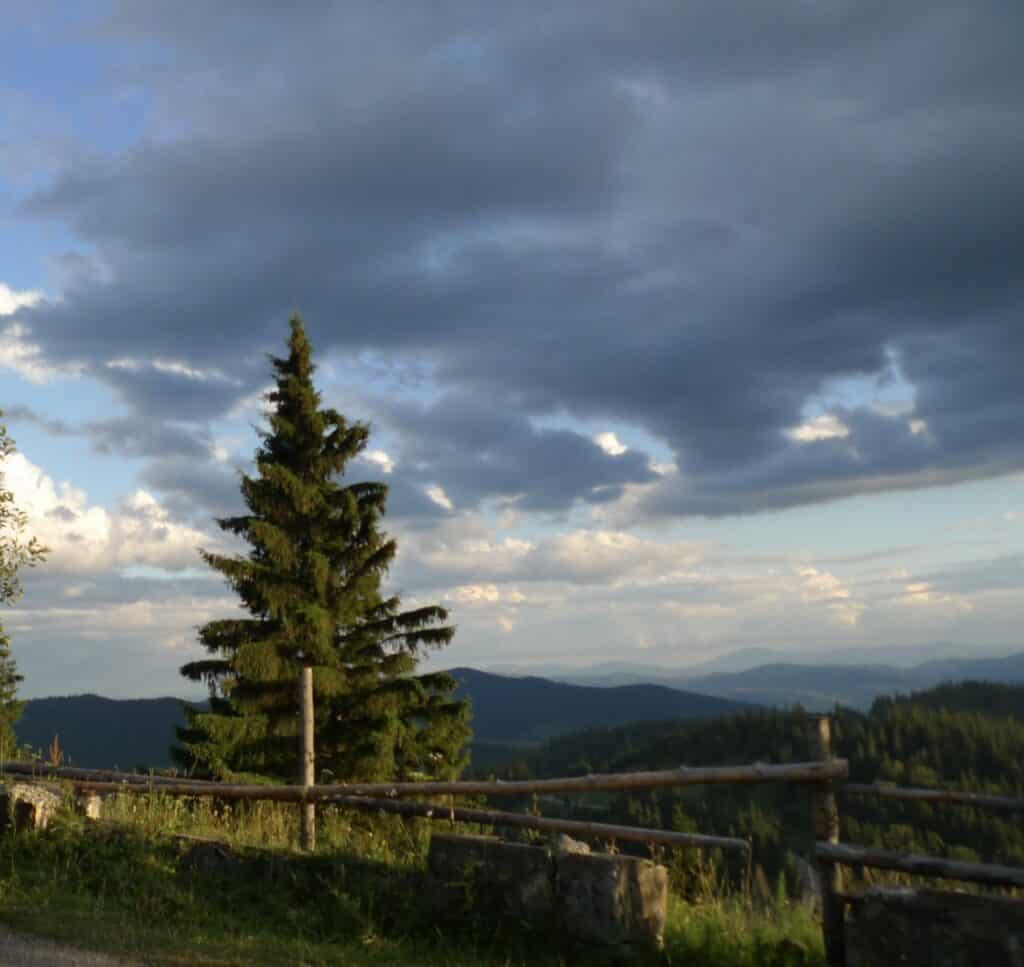The five groups of The Boys differed in their country of origin. The first group was overwhelmingly from Poland but included a number of Austrian and German children. The second group was more mixed and included Boys from a wider variety of countries. The third, fourth and fifth groups were predominately made up of Boys from Czechoslovakia.
In the list on the right of the page The Boys birthplaces are identified by the names used in the interwar period and interwar country to which they belonged.
The Boys came from the following pre-Second World War countries:
- Austria
- Czechoslovakia
- Germany
- Hungary
- Italy
- Poland
- Romania
- USSR
Two largest groups came from Czechoslovakia and Poland.
Research has shown that at least 226 of the Boys came from Subcarpathian Rus.
The wild valleys of the Carpathian Mountains had until the First World War been a remote corner of the Austro-Hungarian Empire and were home to a unique multi-ethnic society which shared languages and mystical views and worked alongside each other harmoniously. Jewish life in the region centred on Munkacs which was 50% Jewish in 1914.
Geographically the Carpathian Mountains stretch from the Vienna Woods arching round through Transylvania to the Serbian border. The unique society of the Carpathians was centred on the administrative region of Subcarpathian ‘Rus, which was between the First and Second World War part of Czechoslovakia, but that that society spilled over the administrative borders into areas of Poland, Slovakia, Hungary and Romania. If we include the number of Boys from these regions the number who came from the Carpathians rises to approximately 250.

Carpathian Mountains
- Bacs-Kiskun County, Hungary
- Bedzin, Poland
- Bekescsaba, Hungary
- Belchatow, Poland
- Berehove, Czechoslovakia (now Ukraine)
- Berlin, Germany
- Bialobrzegi, Poland
- Bialystok County, Poland
- Bodrogkeresztur, Hungary
- Bohemia and Moravia, Czechoslovakia
- Boryslaw, Poland (now Boryslav, Ukraine)
- Bratislava, Czechoslovakia (now Slovakia)
- Breslau, Germany (now Wroclaw, Poland)
- Budapest Area, Hungary
- Budzanow, Poland (now Budaniv, Ukraine)
- Chust, Czechoslovakia (now Khust, Ukraine)
- Cottbus, Germany
- Crisana Province, Romania
- Czestochowa, Poland
- Demblin-Irena, Poland
- Dresden, Germany
- Dusseldorf, Germany
- Eisenstadt, Austria
- Elbing, Germany
- Fiume, Italy (now Rijeka, Croatia)
- Gorlice, Poland
- Graz, Austria
- Gyor, Hungary
- Hajdu County, Hungary
- Hamborn, Germany
- Hamburg, Germany
- Hesse, Germany
- Irshava, Czechoslovakia (now Irshava, Ukraine)
- Iwieniec, Poland (now Ivyanets, Belarus)
- Kiel, Germany
- Kielce, Poland
- Koblenz, Germany
- Konigsberg, Germany (now Kaliningrad, Russia)
- Krakow, Poland
- Krynica-Zdroj, Poland
- Lodz Province, Poland
- Lodz, Poland
- Lublin Province, Poland
- Luck, Poland (now Lutsk Ukraine)
- Mako, Hungary
- Maramures County, Romania
- Minsk, Poland (now Belarus)
- Munich, Germany
- Munkacs, Czechoslovakia (now Mukachevo, Ukraine)
- Nagyrozvagy, Hungary
- Nelipyno, Czechoslovakia (now Ukraine)
- Piotrkow-Trybunalski, Poland
- Poznan County, Poland
- Prague, Czechoslovakia (now Czech Republic)
- Rachov, Czechoslovakia (now Rakhiv, Ukraine)
- Radom, Poland
- Satu-Mare, Romania
- Silesia, Poland
- Slantinske-Doly, Czechoslovakia (now Solotvyno, Ukraine)
- Slovakia
- Sosnowiec, Poland
- Starachowice / Wierzbnik, Poland
- Stettin, Germany (now Szczecin, Poland)
- Subcarpathian Ruthenia
- Svalyava, Czechoslovakia (now Svaljus, Ukraine)
- Szabolcs District, Hungary
- Szombathely, Hungary
- Tacovo, Czechoslovakia (now Tyachiv, Ukraine)
- Unknown
- Usti nad Labem
- Uzhorod, Czechoslovakia (now Uzhhorod, Ukraine)
- Veľka Sevljus, Czechoslovakia, now Vynohradiv, Ukraine
- Velky Bockov, Czechoslovakia, now Velykyi Bychkiv, Ukraine
- Vienna, Austria
- Vilnius Region
- Warsaw, Poland
If you know anything about these places or survivors, please contact the ‘45 Aid Society.